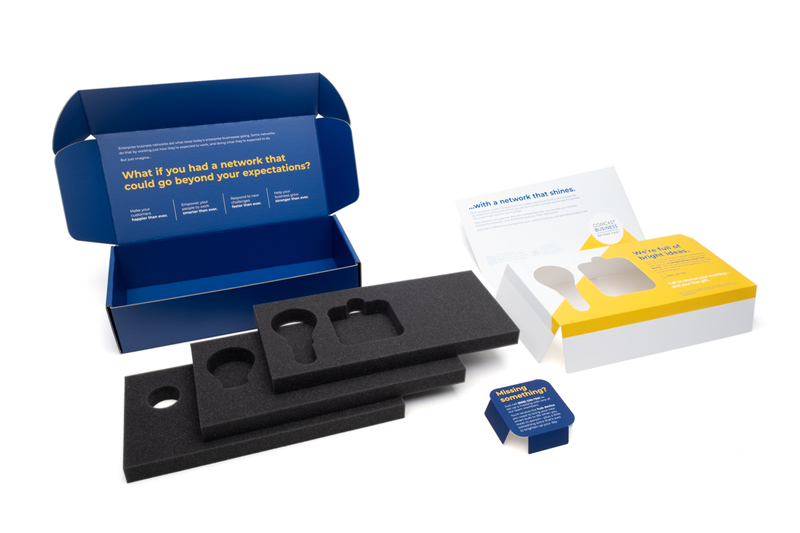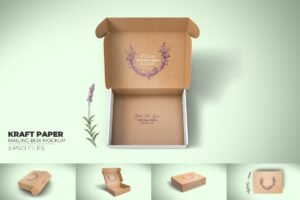When it comes to designing custom box inserts, there are several crucial factors that need to be taken into account to ensure the protection, presentation, and functionality of the packaged product. Let’s explore these five key considerations in detail.

Your Product’s Weight
The weight of the product is a fundamental aspect to consider when designing box inserts. Heavy products require more robust and supportive inserts to prevent them from causing damage during transportation or storage. For instance, if you’re packaging a heavy machinery part, the insert needs to be made of a material that can withstand the weight and provide adequate cushioning to avoid any stress on the product.
Inserts that are not strong enough may lead to the product sinking or shifting within the box, increasing the risk of damage. On the other hand, for lightweight products, the insert can be less substantial but still needs to provide proper positioning and protection.
It’s essential to accurately assess the weight distribution of the product to design an insert that evenly distributes the load and maintains the product’s stability.
Your Product’s Fragility
The fragility of the product is another critical factor. Delicate and fragile items, such as electronics or glassware, demand inserts that offer superior shock absorption and protection against impacts. Foam inserts, for example, can provide excellent cushioning and prevent the product from coming into direct contact with the box walls.
Custom-molded inserts that precisely fit the contours of the fragile product can offer maximum protection. Even a slight jolt or vibration can cause damage to fragile items, so the insert needs to minimize any movement.
For products that are moderately fragile, a combination of materials or a thicker layer of padding might be sufficient. Understanding the specific fragility characteristics of the product helps determine the type and thickness of the protective material used in the insert.
Your Packaging’s Purpose
The purpose of the packaging itself plays a significant role in the design of the inserts. Is the packaging for retail display, shipping, or storage? If it’s for retail, the insert might need to be visually appealing and designed to showcase the product attractively.
For shipping, the focus is on ensuring the product arrives safely at its destination, so the insert should provide maximum protection against the rigors of the shipping process. Storage packaging might require inserts that prevent the product from getting scratched or damaged over an extended period.
The purpose also influences the choice of materials. For example, if the packaging is for long-term storage in a warehouse, a material that is resistant to moisture and dust might be preferred.
Your Product & Packaging Space Requirements
The space available within the packaging and the size of the product are important considerations. The insert needs to fit snugly within the box without leaving excessive empty space that could cause the product to move around.
At the same time, it should not be so tight that it makes it difficult to insert or remove the product. A precise fit ensures that the product is held securely in place and reduces the risk of damage.
If the product comes in multiple components or accessories, the insert should have designated compartments to keep everything organized and prevent items from getting mixed up.
Careful measurement and prototyping can help determine the optimal dimensions of the insert to meet the space requirements.
Placement of Your Products
The placement of the product within the box is crucial for both protection and presentation. Some products might need to be placed upright to prevent leakage or damage to certain components. Others might be better positioned horizontally for stability.
The insert should be designed to accommodate the desired placement and provide the necessary support. For example, if the product has a specific orientation for optimal functionality or display, the insert should ensure it remains in that position.
The placement also affects how the product is accessed by the end-user. An easy and intuitive placement can enhance the user experience when opening the package.
Closing Thoughts
As you can see, when it comes to designing custom box inserts, there are a handful of factors that must be taken into consideration. These different factors can change the material, size, structure, and layout of your custom box inserts but are crucial to ensuring your custom box inserts are able to fulfill your brand’s needs.
With such a variety of factors to consider, some may find it overwhelming to begin designing custom box inserts. Our structural design service is here to make the process much easier and approachable.
Let our structural design engineers worry about the technicalities and the details! All you have to do is share your products and design requirements with us. From there you can let us handle the rest. Learn more about our structural design service, or take a look at how we’ve been able to help other brands turn their dream custom box insert into a reality.






